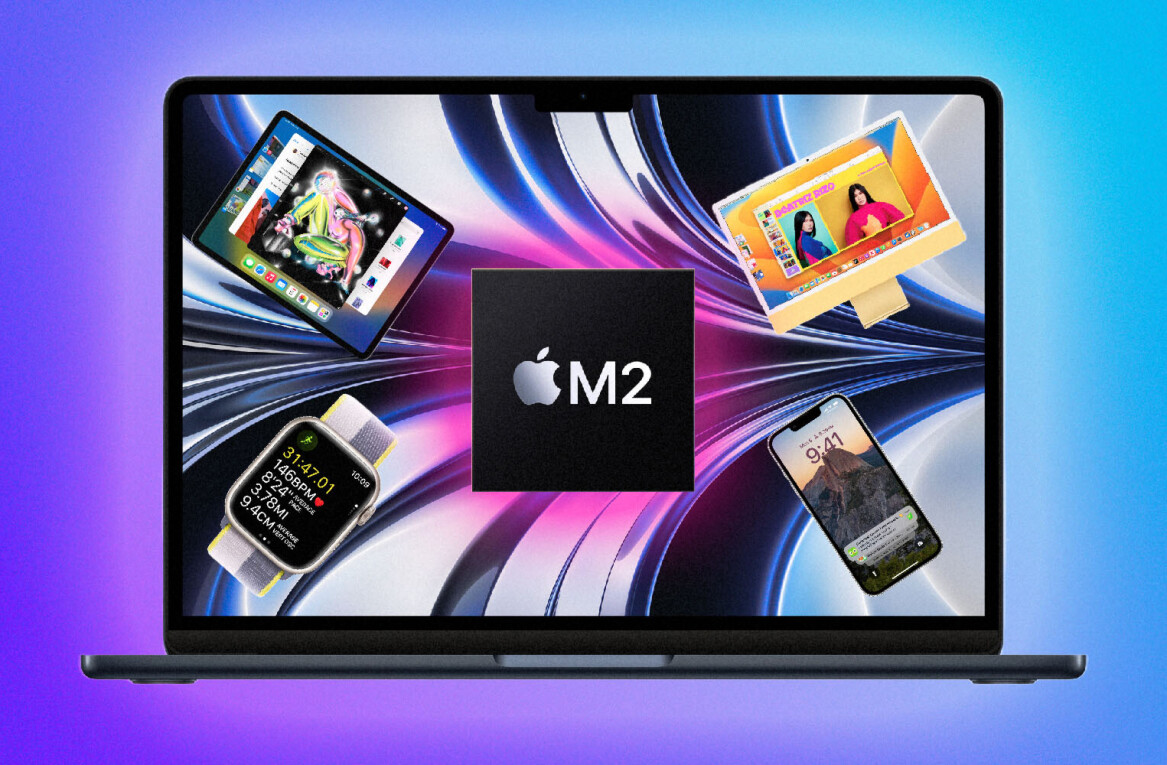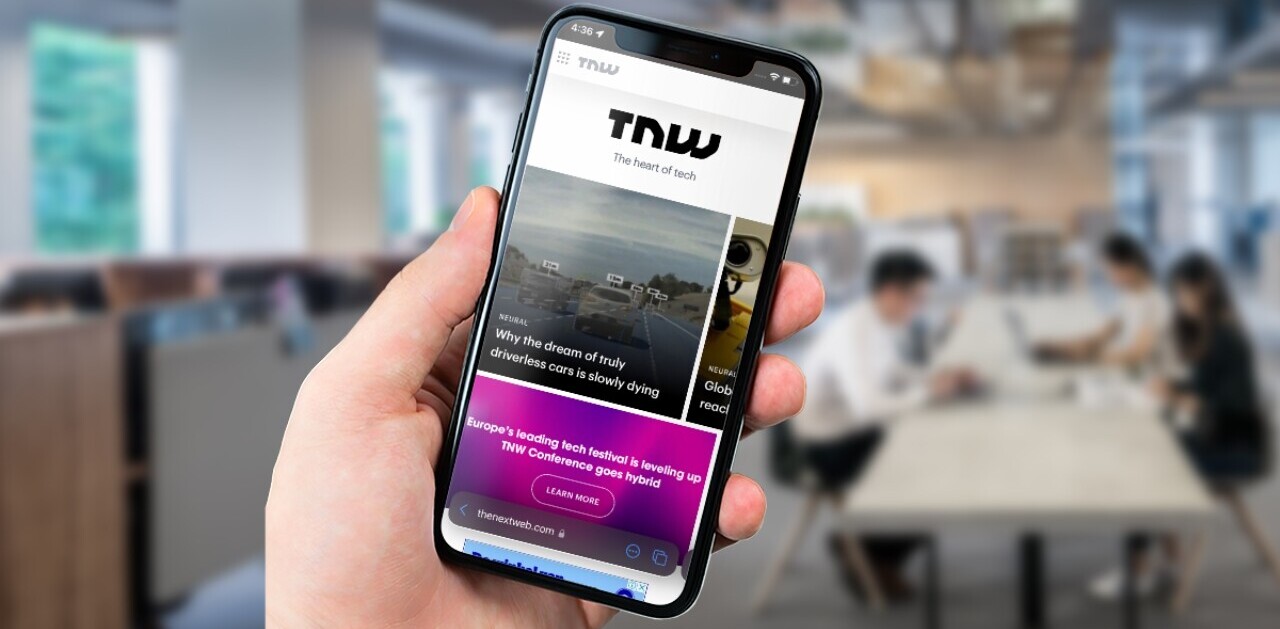
Following all the hullabaloo at WWDC this week, with OS X Yosemite, iCloud Drive, iOS 8, HealthKit, HomeKit, and a brand new programming language unveiled, you could have been excused for glazing over this tantalizing tidbit: third-party keyboards are coming to iOS.
Just as potential car-buyers may express more interest in its coffee-cup holder instead of how many miles they’ll get for the gallon, the little matter of Apple’s stock keyboard has been a perennial issue for many over the years. Not that it’s particularly bad per se, it’s just that once you’ve gotten a whiff of the likes of SwiftKey, Swype or Fleksy over on Android, using the iOS keyboard never quite felt the same again.
Personally, I’ve lost count of the number of times people have said words to the effect of:
“SwiftKey/Swype is the only thing stopping me from switching to iOS.”
Whether or not this has been little more than enthusiasm-powered bluster, remains to be seen. But later this year, when Apple’s hitherto non-compliance with consumer demand for system-wide third-party keyboards is consigned to the history books, iOS will become a far more appealing proposition for many. Including would-be Android defectors.
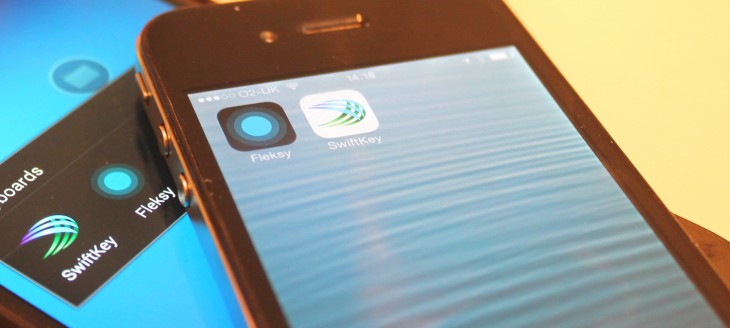
Here, we talk to five companies that stand to benefit from Apple’s latest move.
Fleksy
Founded in San Francisco back in 2011, Fleksy now sports a team of 14 who work from an office in the city’s SOMA district. Fleksy is perhaps most notable for its existing iOS footprint, given the additional accessibility options it has given blind users, with select third-party developers able to integrate Fleksy into their own apps.
“iOS is the first ‘smartphone OS’ to provide a comprehensive accessibility package for blind users, with VoiceOver,” says Fleksy founder Ioannis Verdelis. “Most in the blind community choose iPhones rather than phones with buttons, as the iPhone is fully accessible, all the way from the initial setup, to screen reading for websites, and so on.
“Of course, Android has made leaps in accessibility since we started out, and its own ‘Talkback’ accessibility system is pretty good in recent Android versions too,” he continues. “However, when we started in 2012, iOS was the obvious choice for a company working on accessible technology for the blind market.”
Fleksy uses what it calls ‘Geometric Intelligence’ to combat sloppy and inaccurate typing, predicting where it thinks you meant to hit on the keyboard based on your typing patterns. This, in theory, should help users type more quickly.
Fleksy has offered a standalone iOS keyboard alternative for a while, letting you export text to other services, including Facebook and Twitter. But back in December, the company announced it was ramping up its presence across the iOS ecosystem by opening the Fleksy SDK to third-party services, before finally flicking the switch for everyone to use in February. If you have Fleksy installed, it will work with all other Fleksy-enabled apps, including Wordbox, Google Voice Connect, Launch Center Pro and BlindSquare.
Fleksy is VC-backed by Kleiner Perkins and Highland Capital, and it earns revenue from its consumer apps, including Android, as well as via partnerships with hardware and software vendors that integrate its technology, including the fledgling smartwatch fraternity.
The company already has 1.5 million users, but with an impending full iOS launch on the horizon, this should mean all-systems go for the Fleksy team.
What does this actually mean in real terms for the company? Will Fleksy have to start ramping up its recruitment, or do anything else special to prepare for launch?
“We’ve been on iOS since 2012, and we have considerable expertise and a great team on the platform already,” continues Verdelis. “We are now making sure we can use the new iOS 8 APIs – ours already works on iOS though. We will ramp up efforts including recruiting the top iOS developers – this hasn’t changed, we are growing our team every month. What it does mean, however, is that our technology can be distributed to a wider audience and for a stronger use-case. We see the announcement as a significant broadening of our target market, in a platform where we already have experience, presence, and following.”
Verdelis is coy about what was and wasn’t known in the build up to WWDC, choosing a ‘no comment’ approach around any specific questions relating to Apple. However, he does reveal the annual developer event has made for keen viewing at Fleksy HQ in previous years.
“We have been watching WWDC with bated breath every year since we started, and the whole keyboard industry hoped for such an announcement,” he says. “Especially us, given our roots on iOS and presence there. We are very excited that keyboards take such a center stage for iOS 8, both with the improvements of Apple’s own offering and the ability for us to innovate further on the platform. Keyboards are clearly a big deciding factor for consumers in choosing their next device, and Apple chose this theme for the keynote, which is a big deal.”
Though many hoped that Apple would open up to system-wide keyboard apps, it was only last year, as noted in the Wall Street Journal, when the Cupertino company seemed to pour cold water on the idea. “We don’t believe this would be the best customer experience,” explained Apple spokeswoman Natalie Kerris. However, a few months later, Tim Cook intimated that Apple would be more open with its APIs in the future, though wasn’t overly specific.
So why is Apple finally seeing the light?
“I think that users have been wanting a better typing experience on their mobile device since the first such device existed – just check everyone’s mobile signature,” explains Verdelis. “This is true on all mobile platforms.”
This mention of mobile signatures, of course, refers to the oft-encountered “please forgive any typos” that often append messages that emanate from a smartphone.
“If you type your article on a laptop, rather than a tablet, have you wondered why that is?” he asks. “In fact, why do you even have a laptop in the first place? We’ll be innovating until you don’t need the laptop, and until that mobile signature is eliminated.”
Apple’s WWDC reveals weren’t just about keyboards. A whole bunch of enhancements are coming up with iOS 8, which should go some way towards stoking the iOS flames.
“All the announcements, including keyboards, the notification bar, continuity, and others, makes iOS a very compelling ecosystem for those users who want an enriched experience,” says Verdelis. “I’ve switched between iOS and Android a few times, and a system-wide Fleksy experience is one thing I missed on iOS. I am not even saying this to sing our praises – it’s a genuine user-experience, which many users will echo.”
As for Fleksy’s next steps, it’s full-steam ahead as it prepares to lock horns with SwiftKey, Swype and many others. Earlier this week, the company gave a first glimpse of its app already running system-wide on iOS 8.
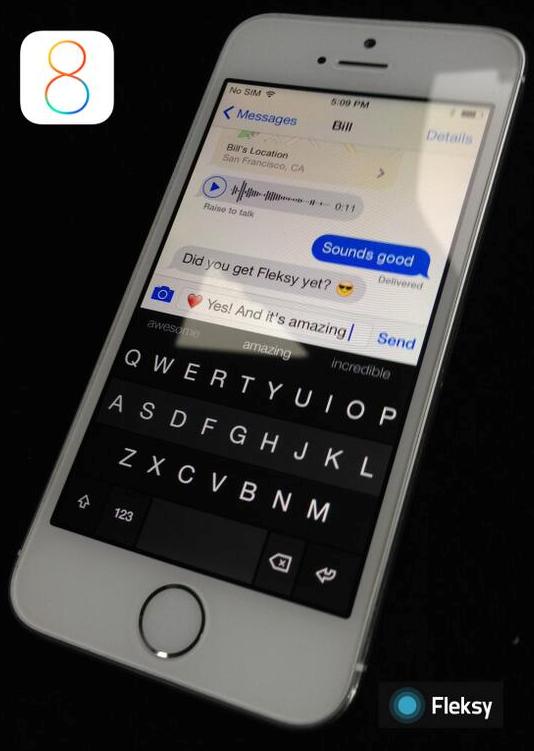
Given Fleksy already caters for iOS, albeit in a restricted silo, it’s not like it’s starting from scratch or anything. But some significant tweaks will be needed prior to launch.
“We need to make the best use of the new iOS 8 APIs, and design some user interfaces for the much broader user base that we will now attract,” says Verdelis. “It’s not a case of porting, or re-writing. It’s a case of polishing our experience on the platform with the new APIs, and offering something unique in the marketplace to be the leading player.”
SwiftKey
If you’re an Android user, you’ll likely know SwiftKey well. The London-headquartered company was founded way back in 2008 by university friends Jon Reynolds and Ben Medlock, with the SwiftKey app itself rolling out in 2010.
The smart, predictive keyboard app has been downloaded millions of times for Google’s mobile OS over the past few years, and has been among the best-selling paid apps on Google Play for the past two years.
Back in 2012, the company rolled out SwiftKey Flow, a Swype-like ‘gliding’ gesture input mechanism which really took the app to the next level. Your finger remains firmly planted on the keyboard at all times, with the release confirming your selection.

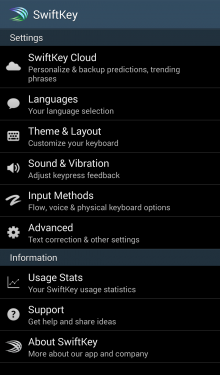
As of January this year, it has started making small inroads into the iOS realm too, launching a simple note-taking app called SwiftKey Note that syncs with Evernote.
Via its SDK, SwiftKey has become much more than a handy keyboard to expedite your text-messaging – the technology is going in-car too, and has also become embedded in healthcare and other enterprises.
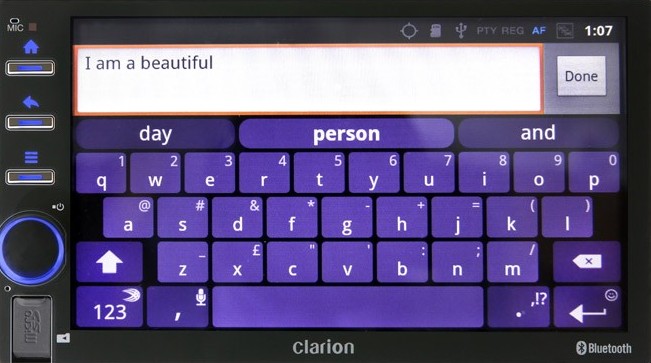
In addition to London, SwiftKey also now has offices in San Francisco, Beijing and Seoul, and has raised north of $20 million in funding since launch. Thanks to millions of downloads, and licensing deals over the past few years, SwiftKey is already a solid, money-making company.
In the wake of Apple’s announcement earlier this week, SwiftKey issued this response to the news:
“We’re delighted Apple has decided to embrace the importance of opening its platform to third party keyboards.
For more than four years, SwiftKey has pioneered faster, easier typing on touchscreens, leading the industry with next-word prediction and smarter autocorrection. Our technology features on more than 200 million devices to date and we can’t wait to reach more.
We first brought a taste of our technology to iOS in January this year with the launch of the free note-taking app SwiftKey Note. Are we going to build SwiftKey Keyboard for iOS 8? Of course we are. We’ve already started.”
As with Fleksy, SwiftKey has already been working on a system-wide iOS app. Indeed, while it seems likely that SwiftKey was privy to Apple’s plans ahead of the official announcement, the company was coy about revealing any further details when approached by The Next Web – perhaps understandably so, given Apple’s fondness of keeping things under wraps. But we did ask them what this news means for them, in terms of ramping up operations.
“Over the last two years we’ve hired on average one new team member a week and that rate of growth looks set to continue,” the company said. “We already have great iOS expertise in-house as demonstrated through SwiftKey Note, and we’re excited about reaching many more users.”
As for why Apple has finally decided to open things up, well, I guess the answer’s obvious. “We can’t speak for Apple on this, but generally at SwiftKey we support giving users choice and allowing them to choose and customize their mobile experience to suit them.”
Swype
Swype was officially founded in 2008, but if you want to get into the real nuts and bolts, the company’s history dates back to 2002 when Cliff Kushler started working in his basement for a solution for people with disabilities.
Swype debuted initially on the Windows Mobile Samsung Omnia 2 in 2009, and latterly was available pre-installed on a handful of Android devices from 2010, as well as part of a closed beta program. Swype Inc. was acquired by Nuance (a company that now has 10,000 employees worldwide) in 2011 for what was thought to be around $100 million. The app wasn’t available as a download on Google Play until April 2013, and to date the company says it has deployed “nearly a billion Swype keyboards.”
Similar to SwiftKey Flow, Swype’s core function is hold-and-swipe to type, as you drag your finger across the keyboard to find the intended word. Users can choose from a number of themes too.

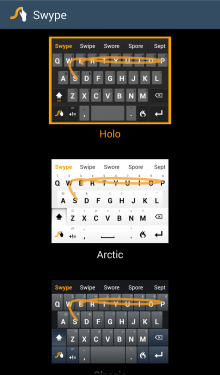
Speaking to GeekWire earlier this week, former Swype CEO Mike McSherry, who left Nuance just a few weeks ago, noted that he’d been seeking to get Swype on board with iOS for years, adding that its first meeting with Apple was five years ago. Naturally, he’s now “excited to see it finally happen,” even if he has left the company.
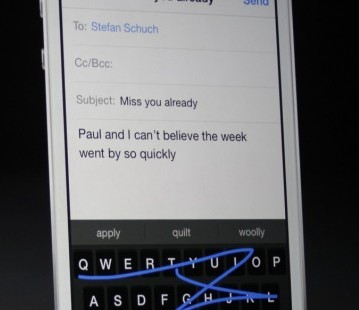 With that in mind, Swype was actually shown-off on stage at WWDC working on iOS 8. So it’s safe to say this has been a burgeoning relationship in recent months.
With that in mind, Swype was actually shown-off on stage at WWDC working on iOS 8. So it’s safe to say this has been a burgeoning relationship in recent months.
We reached out to Swype to get a few more insights on the news, but similar to SwiftKey largely adopted a ‘no comment’ approach to many of the questions.
“It’s great news – the development of the Swype app for iOS 8 is already underway as showcased, and we’re excited to expand its availability,” says Aaron Sheedy, Vice President of Product Marketing, Nuance Mobile and Consumer.
Will Swype, and its competitors’, arrival on iOS play a big part in luring defectors from other platforms?
“We can’t speculate on this point,” continues Sheedy. “Swype has been very successful on the Android platform. We’ve deployed almost a billion Swype keyboards through OEM partners and storefronts. Six years ago, the Swype input style was just a crazy concept and, as of this announcement, it will be on every major OS. That is thrilling.”
Adaptxt
Much of the post-announcement hoo-hah centered on the aforementioned companies, but a quick peek in Google Play reveals a slew of alternatives. For example, UK-based software company KeyPoint Technologies has a myriad of keyboard apps for Android, under the Adaptxt brand.
Founded in 2004, KeyPoint Technologies is based in Glasgow (Scotland), with additional offices in India, Japan, China and the US. The majority of its users originated from partnerships with OEMs (Original Equipment Manufacturers), but it’s now set to follow in Android’s footsteps with an iOS incarnation later this year.
In a nutshell, Adaptxt offers both the traditional ‘tap typing’ and ‘swiping’-style keyboards, wrapped into a single keyboard, with a range of themes thrown into the mix.


As with its competitors, Adaptxt learns a user’s style to improve typing over time, though it also offers more than 100 languages and 30 specialized dictionaries covering industry-specific terminology.
We spoke to Sumit Goswami, CEO of KeyPoint Technologies, to get his thoughts on what this news means for him and his company.
“We’re very well known within the Android community and have been working toward delivering the same experience on iOS,” says Goswami. “Our development team is ramping up and, with offices in India, Scotland, Japan, China and the US, we will be bringing on more top talent from around the world.”
Goswami says he wasn’t surprised at the WWDC announcement, given CEO Tim Cook’s previous hints that it would be more open with its APIs in the future. So why does he think Apple is now opening things up a little more?
“Like Mr. Cook said, his customers pay them to make choices on their behalf,” he continues. “I think there are great input technology makers in the market. We’ve been developing and continuing to enhance our technology for a few years now. The demand is definitely there and the product is mature; these might be the determining factors.”
Goswami adds that they’ve been working on an iOS app for some time already, so this won’t be a square-one project for his team.
Minuum
There’s a number of newer, smaller players currently operating in the keyboard app space too.
Just last month, we reported on Minuum, which we called a nifty collapsible keyboard app for Android. In a nutshell, Minuum lets you shrink the entire keyboard down to a single row of letters without giving up any of the core functionality, though it does take a little getting used to.

As with Fleksy, SwiftKey, Swype and Adaptxt, Minuum’s parent company, Whirlscape, has big plans in the wake of the iOS 8 third-party keyboard announcement.
“This news is tremendously exciting, and we are ramping up our development efforts to bring Minuum to iOS,” a company spokesperson tells us. “We will be announcing more details when we’re closer to launch, but we’re looking forward to finally fulfilling the wishes of our many iPhone-wielding supporters.”
And if you’re keen to keep tabs on its efforts in the iOS space, well, you can register for updates here.
“Apple’s decision to open up in this direction appears to be an acknowledgement that customization is important to touchscreen phone users, which has historically been a major reason for users to choose Android over iOS,” the spokesperson adds.
Minuum came to fruition thanks to Indiegogo funding, and although it has been an Android-only affair thus far, in the company’s post-WWDC message, it became apparent just how deeply iOS was already featuring in Minuum’s thoughts.
“Ever since our Indiegogo campaign, we’ve had thousands of Minuum fans on iOS waiting patiently for Apple to make a move like this, and we’re as excited as they are about Apple’s decision to allow third-party keyboards.
Our first ever Minuum prototypes were actually built for iOS, and we’re looking forward to bringing those back to life.”
While Minuum is a relative new kid on the block, it’s already working towards other platforms, including smartwatches and also what it calls the first ever keyboard to work with Google Glass. So iOS is an obvious move for it to make next.
These are just five companies that are preparing to reap the rewards of Apple’s new ‘open’ direction. There will undoubtedly be many more too, both existing players and newcomers, and it will be interesting to see how this new category unfolds when autumn comes around.
Get the TNW newsletter
Get the most important tech news in your inbox each week.




